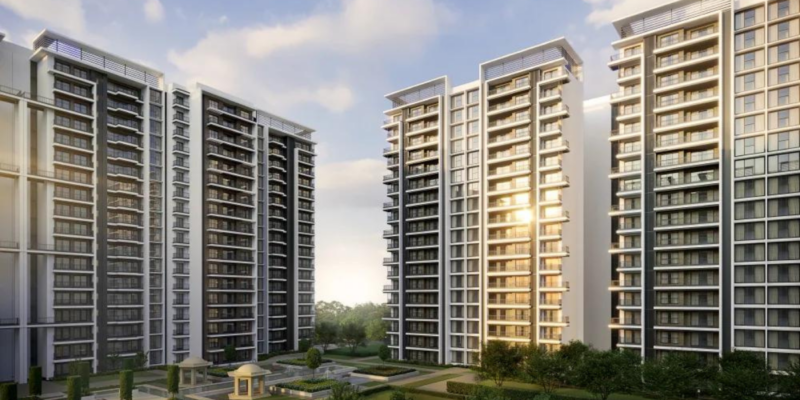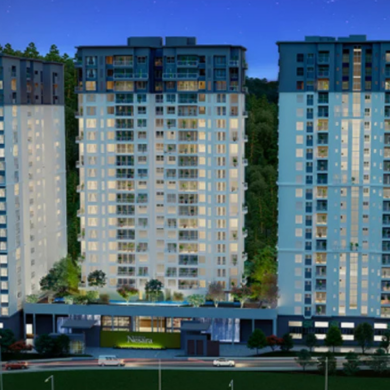
There are several costs to consider while choosing one’s ideal home. Some builders impose an additional cost known as PLC, in addition to other fees. The PLC stands for Preferential Location Charge. Most home buyers are prepared to pay a little extra for specific characteristics that other purchasers might not have. This led to the creation of the preferential location charge, which increases the overall cost for the buyer.
As part of a growing trend, preferential location charge, or PLC, is increasingly frequently included in the overall cost of a housing unit. It is undoubtedly one of the most frequent terms that a prospective buyer can come across in a real estate dictionary.
Table of Contents
What is a Preferential Location Charge (PLC)?
The Preferential Location Charge, or PLC as it is more often known, is simply a fee that a buyer must pay to purchase a unit that is better located than the competition. You may be familiar with homes with views of a sea, park, pool, or road, as well as those with views of a corner or street. Due to such leverage, the valuations of these units may change, inflating the buyer’s property cost.
How is PLC Calculated?
Preferential Location Charges are paid on a house’s super built-up area in square feet. You may estimate the Preferential Location Charges by dividing the super area of your flat by the rates shown on the developer’s project cost sheet. Preferential Location Charges vary based on a variety of factors
Unfortunately, as no established standards are controlling the matter, builders are allowed to choose the Preferential Location Charges, which are primarily intended to maximise profit from sales.
In other words, Preferential Location Charges are equal to the Super Area of Your Apartment times the Preferential Location Charges Rate.
It’s crucial to remember that each builder could have unique guidelines for figuring out preferred location fees, and various rights might have unique costs. Therefore, before making any decisions, it’s crucial to establish with the developer or vendor how the fees are determined and what privileges are offered.
How are Preferential Location Charges (PLC) Determined?
There are no predetermined rules or guidelines that apply to Preferential Location Charges. Preferential Location Charges levels vary depending on the developer and project, with the average Preferential Location Charge per unit being higher for luxury apartments in upscale neighbourhoods. Apart from luxury developments, preferential location fees may apply to corner plots, independent homes with broad roads in front or gardens facing, penthouses atop buildings, and other properties. Depending on the developer and the project, a client may be charged between Rs 100 and Rs 500 per sq ft in preferential location fees.
Several factors affect charges – these variables may include the nature of the project, the property’s location, the local climate, the building quality of the units, the accessibility of the facilities, and the choice of floor.
Types of Preferential Location Charges or PLC
Let’s quickly review a couple of the most significant types of preferential location charges or PLC:
Choice of Floor:
One of the most significant factors affecting the amount of Preferential Location Charges is the choice of floor. These charges are unique to each level and govern all the units there. However, due to the beautiful views they provide, apartments on higher levels can command higher Preferential Location Charges in specific cities. However, apartments on the middle levels are the ideal choice if you’re on a tight budget.
Climate:
The amount of Preferential Location Charges for floors is significantly influenced by the local climate. Because the top floors are thought to be significantly better ventilated than the others, people choose them in places like Mumbai where it is frequently humid.
Facilities:
Prime metropolitan locations for luxury projects have substantially higher PLCs, making such sites excessively expensive. Penthouses probably will command higher Preferential Location Charges when compared to some other units in the same building. This is often because penthouses are often found on the top level of a residential structure, and are filled with luxury facilities, including an exclusive private patio.
Impact of PLC on Property Value and Pricing
PLCs dramatically raise the cost for property purchasers, largely because they are assessed based on the super built-up area rather than the carpet area of the unit.
For instance, even if the house only has a carpet area of 1,000 square feet, the PLC is computed based on the super built-up area which could be around 2,000 square feet.
Developers have complete latitude in setting PLCs at rates that are favourable to them because there are no set rules. Depending on the developer and the project, a buyer may be charged anywhere between Rs 100 and Rs 500 per sq ft as PLCs.
For instance, a corner flat with a view of a park will draw two PLCs: one for the floor it is on and another for the view of the park. For the flat’s corner placement, a third PLC will also be necessary.
Is the Price of a Preferential Location Charge Negotiable?
Yes, the price of Preferential Location Charges in real estate is negotiable. The price depends upon the demand for the property, the market rate, and the amount of negotiation between the buyer and seller. However, by making an investment in a project at the time of launch, the buyer can offset the PLC costs. More often than not, that sum can be made up for by the developer’s first discount.
Pros and Cons of Preferential Location Charges or PLC
It benefits both parties – the buyer and the seller – when preferred location fees are paid. By paying more, you may secure an apartment in a location of your choosing, and the seller will be financially motivated to provide it to you rather than to someone else. It is crucial to keep in mind that this is an extra expense because you are effectively paying for preferred treatment.
These preferential location charges may cause issues with affordability because the higher the fee, the more expensive it will be to access a certain property. Since developers are encouraged to construct more of a given sort of property to collect preferential location charges, there may not be as many properties accessible that suit less common preferences. Some developers can use preferential location charges on limited facilities by providing just basic infrastructure, limited amenities etc., thereby expecting homebuyers to pay extra for the bare minimum.
Factors to Consider with PLC
Here are a few tips for buyers and investors when evaluating properties with PLC in real estate:
- Confirm that the PLC’s coverage region corresponds to your investment requirements. To protect your investment, you need to make sure that the housing supply, rental demand, and other elements like zoning laws, taxation, and land use rules are favourable.
- Examine the property’s past and present conditions. Find out if it has already been developed or if more development is required. Consider elements like the price of building supplies, labour, and funding.
- Evaluate the environmental state of the site. Look into the sustainability of the property. Today, many developers provide provisions for rainwater collection on the property, maximise solar power for public spaces, etc.
- Examine local infrastructure, population growth, new company development, and other economic factors to determine the area’s potential for appreciation.
- Make use of the assistance of dependable specialists including seasoned attorneys, financial consultants, and real estate brokers.
- Finally, be patient. Consider your options carefully, and never sign up for more than you are comfortable paying. While living in an apartment that has an edge over the others may come with its benefits, it also significantly affects the wallet.
Final Thoughts
In conclusion, we can understand that the Preferential Location Charge, or PLC as it is more often called, is paid in order to buy a unit that is more advantageously situated than the other options of a residence. Homes with views of the ocean, parks, swimming pools, or roads as well as those situated in the corner may all attract the PLC. The values of these units might vary, thereby increasing the buyer’s property cost.
Preferential location fees in real estate can vary depending on several variables, including the project and location. It is crucial to remember that these fees could vary depending on the level of a building and might not be figured into the basic cost when the project is being built.
Furthermore, they might not be relevant if you buy a house on the secondary market. To make a transparent and well-informed purchasing choice, it is vital to be aware of the exact fees and policies for the property you are interested in and to clarify any queries with the developer or seller.
FAQ’s
1. How much is the GST on preferential location charges?
18% GST will be applicable on preferential location charges in real estate, according to the latest reports.
2. Will preferential location charges for a flat attract 18 GST?
When a built property is sold or transferred before the issue of a completion or occupation certificate (CC/OC), PLC that is collected as part of the price for the sale of the property is subject to GST at an 18% rate.
3. What is FRC?
FRC stands for Floor Rise Charges. These are extra fees that a buyer may have to pay for a property situated on a higher level of a multistory structure.
4. What is a PLC charge in real estate?
PLC is the additional cost a buyer must pay for the benefits his house receives from the view and position inside a housing society over and above the normal selling price of a flat. For instance, a unit with a view of a park or a swimming pool will draw PLC because of the scenery.







